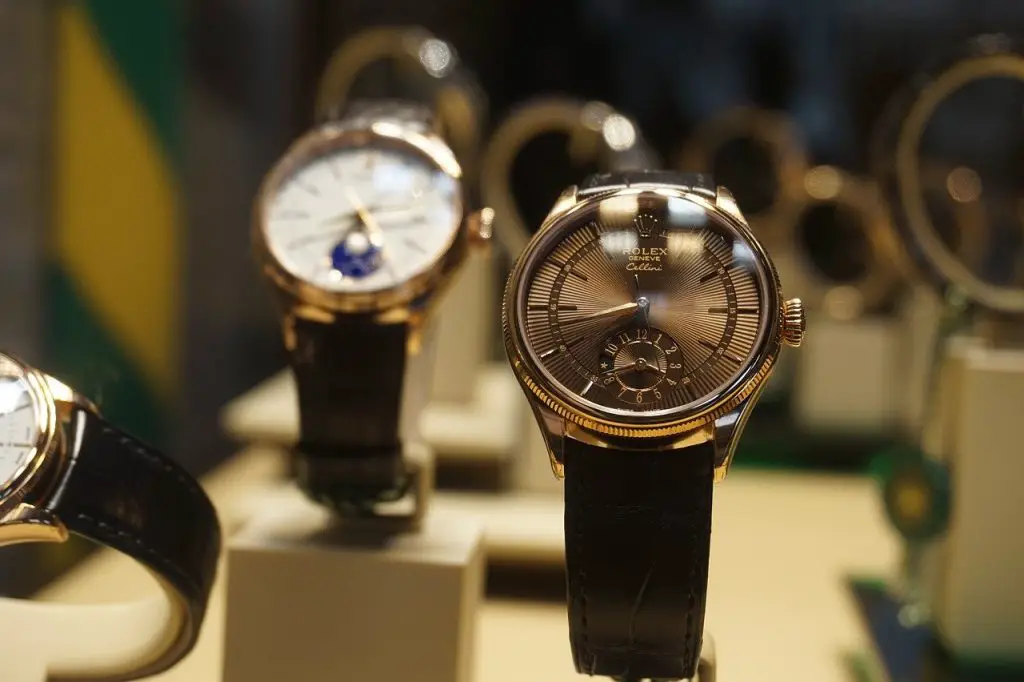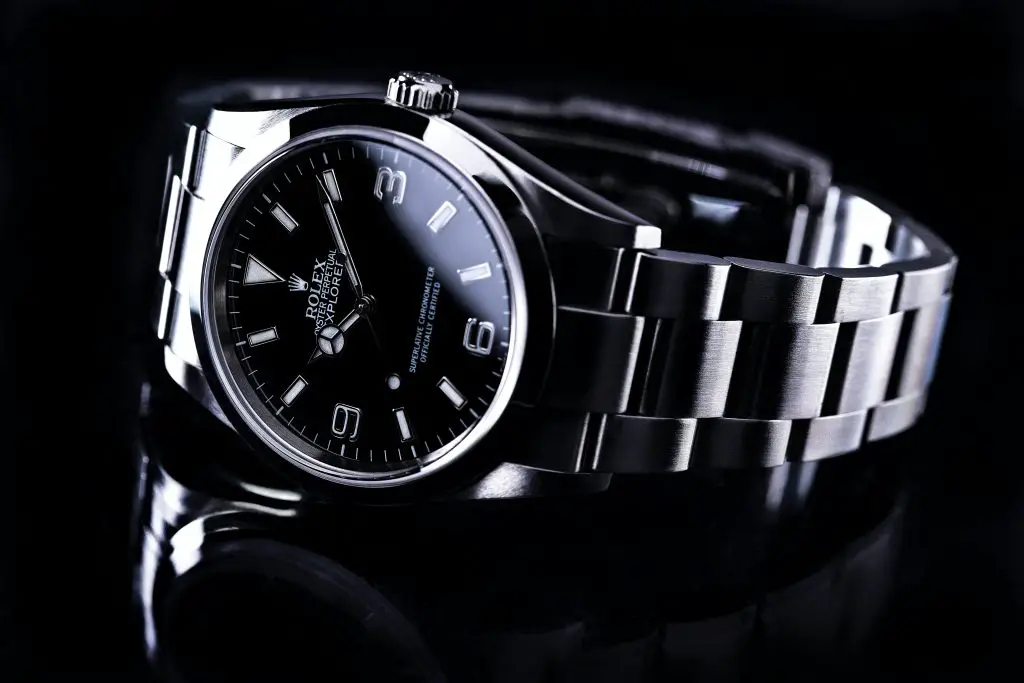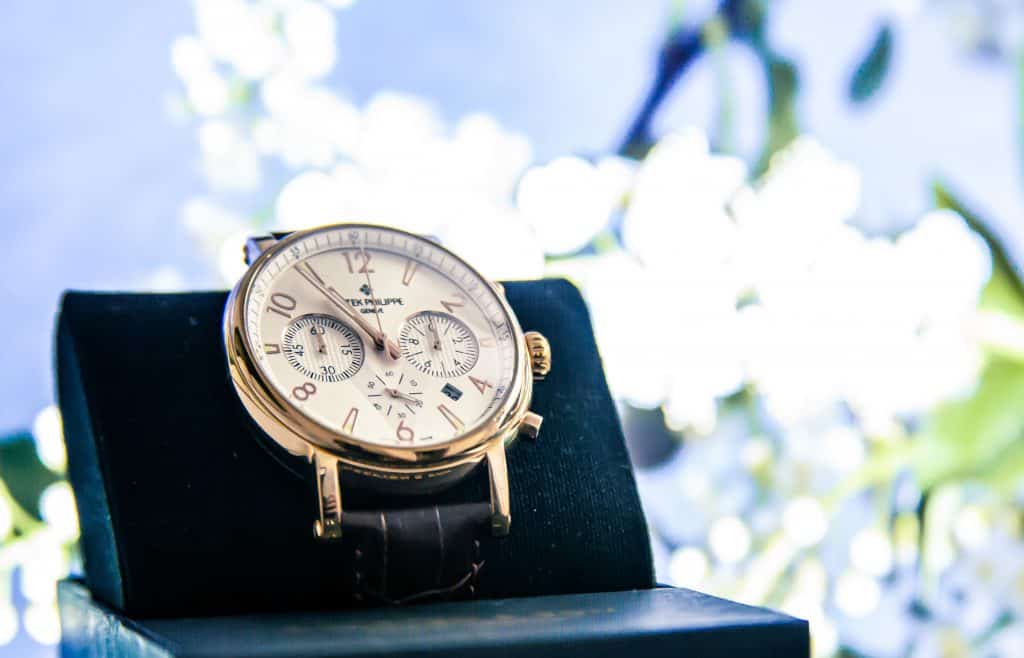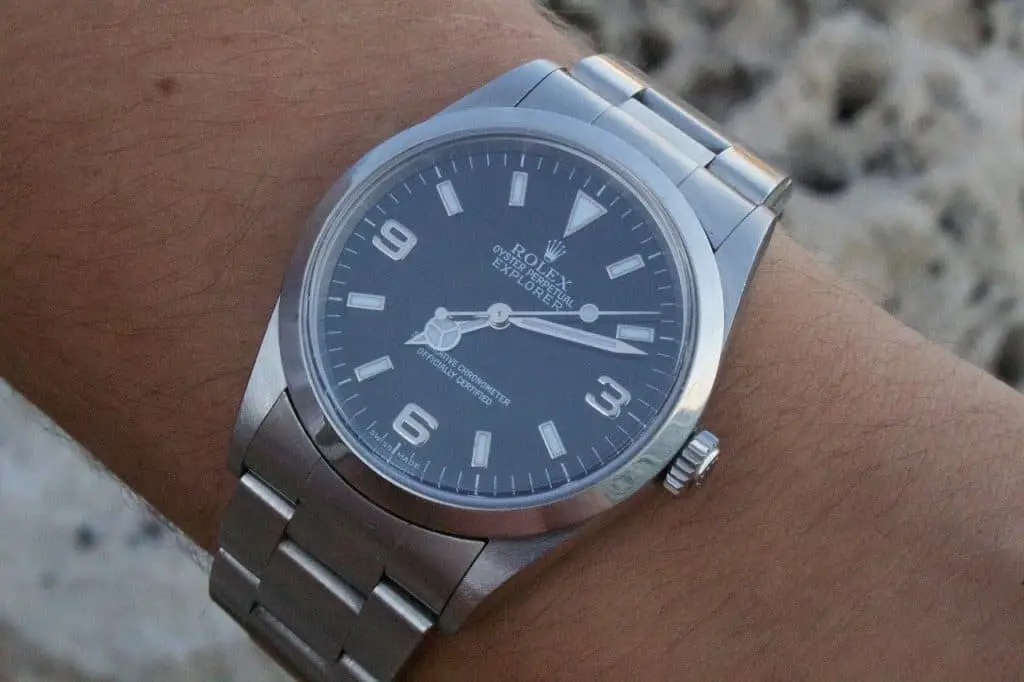Also known as self-winding watches, automatic watches are a work of mechanical art. It’s no surprise that watch wearers often become quite intrigued by how their timepiece works, so we thought we’d put together a post explaining how automatic wristwatches work.
Automatic watches have a freely oscillating metal weight inside the case called a rotor. As an individual wears an automatic watch, the rotor spins from the movement, transferring energy to the mainspring to be stored. The natural energy of the wearer powers the winding motion of the mainspring.
In this article, we’ll take a closer look at how automatic watches function and go over the essential components that make up automatic timepieces from the inside. Plus, we’ll answer your most common (yet pressing!) questions, like if you should slip on your automatic watch every day or whether or not it’s a good idea to leave your watch rotating in a watch winder? We’ll answer all of those questions and more so you can put down your phone feeling like an automatic watch expert!

Table of Contents
How Do Automatic Watches Work?
Automatic watches work using a rotor, a pivoted eccentric weight that swings when the watch wearer moves their arm. This swinging motion of the rotor transfers and stores energy to the mainspring, thus powering it and powering the watch. Because automatic watches wind naturally from the help of a wearer’s physical movement, regularly wearing an automatic watch or placing it into a watch winder is necessary to keep it running optimally.
Once the energy from an automatic watch is depleted, a simple flick of the wrist or a few minutes of wear time will make the watch start working again. On average, automatic watches have a power reserve of about 36 – 42 hours. The power reserve is the time it takes for a fully wound timepiece to unwind when not worn.
Components That Power An Automatic Watch
Now that you know the basics of how an automatic watch works, let’s break down the internal components that must work together to power these self-winding time-tickers.

The Mainspring
The mainspring is the power source in mechanical and automatic watches. It’s a spiral spring of metal ribbon that stores kinetic energy to power the watch. The coil becomes tighter as it stores more energy. When you wind or turn the crown of a watch (the little knob on the side of the case), the mainspring tightens and coils up. When you unwind the mainspring, it turns the gears inside instead.
The Gear Train
Made up of small wheels and gears, the gear train makes the watch hands move and transfers stored energy in the mainspring to the escapement.
The Escapement
The escapement in a watch is designed to release transferred energy from the mainspring through the gear train to the balance wheel – aka timekeeping element – in regular intervals.
The Dial Train
Like the gear train, the dial train is also a series of gears that transfer equal amounts of energy into the watch hands from the balance wheel, therefore moving the hands on the dial.
The Crown
The crown of a watch is a small wheel or knob located on the watch’s side. When the crown is wound, the watch can work.
The Rotor
The rotor is a metal weight that freely moves from side to side as a person wears their watch. The rotor transfers power to the mainspring when the watch is being worn or wound in a watch winder.
The Balance Wheel
The balance wheel is a weighted wheel that turns in a circular motion between 5 – 10 times per second.
The Jewels
Not your typical jewels, these jewels are man-made rubies placed in the center of a gear. They help keep the gear in constant motion and prevent too much heat and friction from causing damaging wear and tear.
How Do Automatic Watches Differ From Other Watches?
Not all watches have the same watch movements – and there are some stark differences in how automatic watches work versus watches with mechanical and quartz movements. Automatic watches require the wearer’s movement, whereas mechanical watches need the crown to be manually wound. Quartz watches need a simple battery replacement.
Read on to learn more about the differences between automatic, quartz, and mechanical watches.
Automatic Movement Versus Quartz Movement
An automatic watch relies on getting its power to the mainspring via a rotor and the wearer’s movement. A quartz watch requires a watch battery to function. This is one reason why automatic watches are more expensive to buy and costly to repair than quartz since watches with automatic movements contain hundreds of tiny parts that are labor and time-intensive to fix.
On the other hand, quartz watches are relatively cheap because only the battery needs to be replaced once the watch is no longer keeping time.
Automatic Movement Versus Mechanical Movement
Watches powered by automatic and mechanical movement work similarly in that both movement types use a rotor to produce power. However, the difference is that in a mechanical watch, energy is produced by the rotor as the watch is manually wound at the crown.
Automatic watches use the movement of the wearer to get the rotor rotating and power the timepiece. Both watch movements use the same technology and parts; only automatic watches require physical motion to work.
With mechanical watches, there is a concern of overwinding, which could damage the watch. Most mechanical watchers need the crown to be turned somewhere between 20 – 40 times to work. You can also check for resistance in a clockwise direction. Conversely, automatic watches are easier to maintain since they have built-in safety mechanisms to defend against manual overwinding and magnetization from watch winders.
Check out our post on watch winders if you missed it.
How Accurate Are Automatic Watches?

Automatic watches are 99.7% accurate. They can be off by about 25 seconds a day. This means that the time could be off by about 25 seconds or less. This is caused by weather conditions, environmental conditions, as well as the movement being slightly off.
Automatic watches must accommodate for the changes in the environment. Weather conditions such as snow, heat, and moisture affect a watch’s movement. For example, when compared to a quartz watch, you’ll see that quartz watches are usually more accurate.
This is because they function on a battery that precisely sends power when it needs to. Despite the numbers saying otherwise, in real life, you will rarely notice this difference in accuracy. It’s just a numbers game that’s so small that you just won’t notice it.
How Long Do Automatic Watches Last?
Automatic watches can stay working anywhere between a few days to a few weeks without any need for additional winding. You can expect to get about 40 – 50 hours of wear time with the average automatic watch. If you wear it every day, you only need about 30 hours of stored energy.
Regarding heirloom longevity, quality automatic watches can last generations. Japanese (Citizen, Credor, Grand Seiko) and Swiss (Rolex, Tag Heuer, Omega) watch movements excel at churning out top-notch timepieces.
The saying ‘A Watch Is A Lifetime Purchase’ isn’t here for nothing. Quality automatic timepieces can easily last several decades. Even though you might spend a little more money upfront, an automatic watch will last you an amazingly long time. It might even outlast you if you take proper care of it!
Do Automatic Watches Stop If They Aren’t Worn?
Generally, automatic watches will stop working if they have not been worn for 24 – 48 hours. Most automatic watches have a power reserve of up to 48 hours. Once that’s depleted, the watch stops working. Remedy this by either wearing the watch or storing it in a watch winder.
To power your automatic watch, briefly shake the watch or twist the crown a few times. Alternatively, you can store your watch in a watch winder. The winder will mimic your wrist’s movement, ensuring that the watch will always be wound.
This way, your watch won’t deplete its energy reserve, ensuring it will keep working, even if you don’t wear it.
Should I Wear An Automatic Watch Every Day?

While you can wear an automatic watch every day to keep it fully wound, it is not necessary to wear it every day. Automatic watches have an energy reserve that ensures the watch keeps on working when not worn. If you simply want to wear the watch for aesthetic purposes, you can definitely do so.
However, wearing your automatic watches or ensuring that they are stored in a watch winder when not in use is the best way to care for them and extend the life of your automatic timepieces.
Is It Bad To Manually Wind An Automatic Watch?
It’s not bad to manually wind an automatic watch, though you do want to be careful not manually wind it too often. It’s best to wear the watch, so you don’t have to wind it anyway, but you can certainly do so manually if your watch requires winding. Just be careful.
But why would an automatic watch need manually winding? Good question – it’s usually because the watch isn’t being worn often enough (8 – 10 hours a day is a good minimum), or the wearer’s arm movement isn’t enough to store the needed energy to power the watch.
You can imagine that your arm moves a lot more when you’re out on a run when compared to a day’s work in the office behind a computer. Although automatic watches are very sensitive and easily pick up movement, you do actually need to move your arms in order for it to wind itself.
Do You Need A Watch Winder For Automatic Watches?
A watch winder isn’t necessary if you own an automatic watch, but they are nice for when you are not wearing your watch. Typically sized and shaped like a watch gift box or mini-safe, a watch winder stores automatic watches and keeps them fully wound, so you can grab the watch and go and never worry about whether or not it is charged.
If you’re wondering if you could use a watch winder, ask yourself these questions:
- Do you have an automatic watch?
- How often do you wear your watch?
- How many automatic watches do you have?
Watch winders are only designed to work with watches that have automatic movements, so if your collection only consists of quartz or mechanical watches, you won’t benefit from a winder. They can be placed in a watch winder, but there is nothing that will happen.
If you do have an automatic watch – whether that’s a single timepiece or twenty – you’ll enjoy the benefits of owning a watch winder. Especially if you have an extensive collection, keeping your automatics stored in watch winders keeps them fully wound and ready to be worn at a moment’s notice. It’s very convenient for you, especially if you frequently forget to wear your watch or you travel a lot.
You can get a quality single-watch winder starting around $40. A double watch winder that’ll hold two watches will run you about $100. Expect to shell out more dough for a winder that holds more watches – some will hold 12 watches or more!
